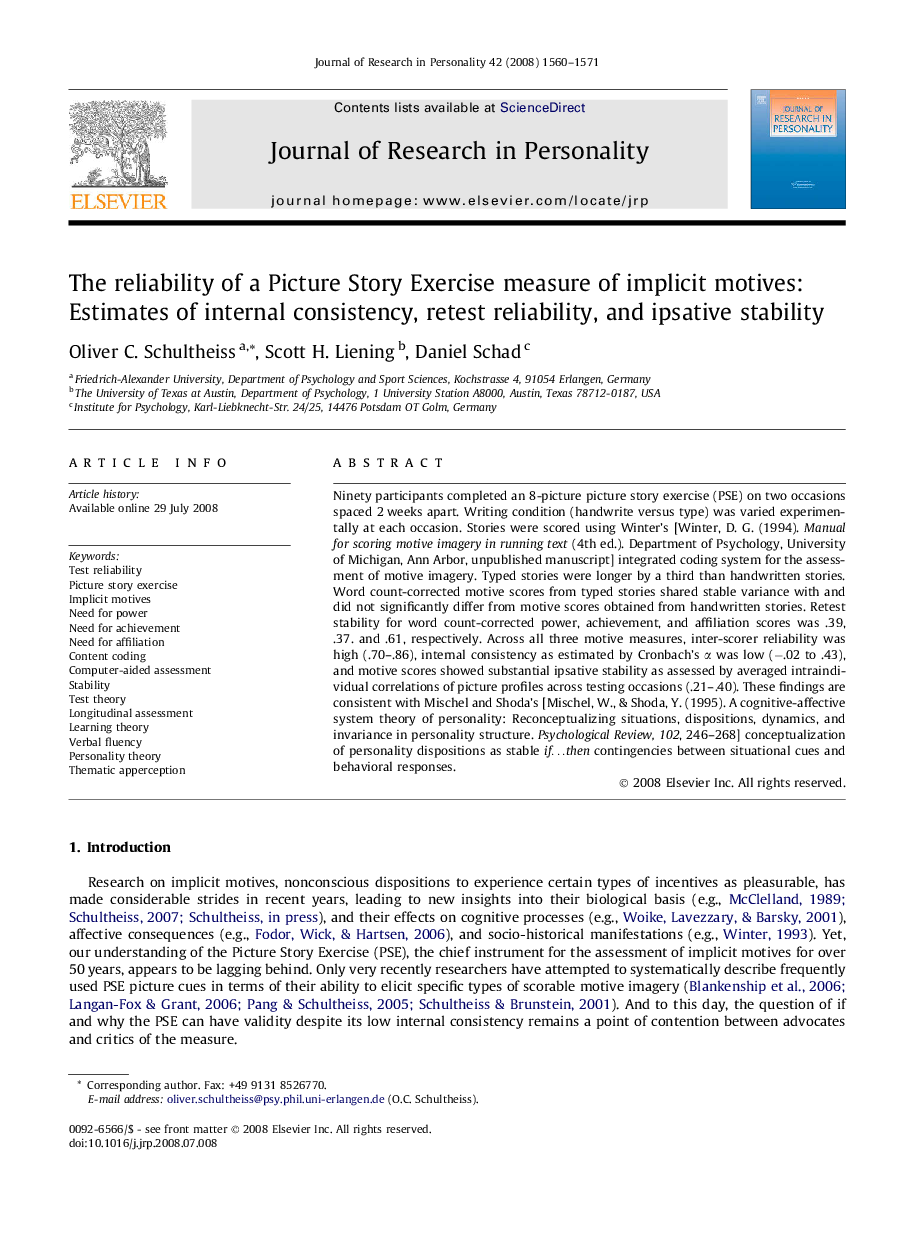| Article ID | Journal | Published Year | Pages | File Type |
|---|---|---|---|---|
| 952078 | Journal of Research in Personality | 2008 | 12 Pages |
Ninety participants completed an 8-picture picture story exercise (PSE) on two occasions spaced 2 weeks apart. Writing condition (handwrite versus type) was varied experimentally at each occasion. Stories were scored using Winter’s [Winter, D. G. (1994). Manual for scoring motive imagery in running text (4th ed.). Department of Psychology, University of Michigan, Ann Arbor, unpublished manuscript] integrated coding system for the assessment of motive imagery. Typed stories were longer by a third than handwritten stories. Word count-corrected motive scores from typed stories shared stable variance with and did not significantly differ from motive scores obtained from handwritten stories. Retest stability for word count-corrected power, achievement, and affiliation scores was .39, .37. and .61, respectively. Across all three motive measures, inter-scorer reliability was high (.70–.86), internal consistency as estimated by Cronbach’s α was low (−.02 to .43), and motive scores showed substantial ipsative stability as assessed by averaged intraindividual correlations of picture profiles across testing occasions (.21–.40). These findings are consistent with Mischel and Shoda’s [Mischel, W., & Shoda, Y. (1995). A cognitive-affective system theory of personality: Reconceptualizing situations, dispositions, dynamics, and invariance in personality structure. Psychological Review, 102, 246–268] conceptualization of personality dispositions as stable if…then contingencies between situational cues and behavioral responses.
